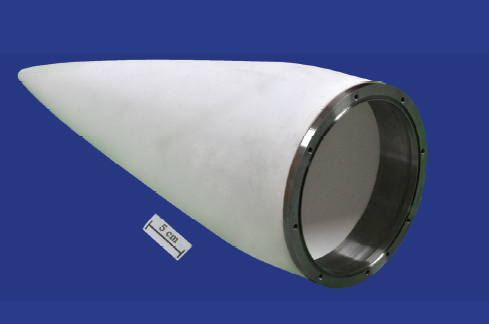Description

Disclaimer: Copyright infringement not intended.
Context
- Carborundum Universal Limited (CUMI), has signed an Agreement with the Defence Research and Development Organisation (DRDO) for manufacturing ceramic radomes used in aerospace and missile systems.
About
- The ceramic radome is regarded as an essential, state-of-the-art technology for ballistic and tactical missiles and high-performance aircraft.
Radome
- Radomes are structures or enclosures designed to protect antenna and associated electronics from the surrounding environment and elements such as rain, snow, UV light, and strong wind.
- The name "radome" is derived from the words radar and dome.
- The protective shell enhances the pointing accuracy of antenna systems by offsetting negative impacts of UV degradation, wind load, or build-up of snow and ice. The key functionality of these structures is to extend the system's ability to perform under adverse conditions while creating a safe working environment.
.jpeg)
Applications
- Use of radomes applies to a range of industries that require the protection of sensitive equipment, electronic components, and personnel. These include:
-
- Weather radar.
- Aviation
- Maritime communications.
- Surveillance
- Satellite communications.
- Coastal surveillance.
- Military and civil flight simulation.
- Military and civil radar.
- Microwave
- Broadcast equipment.
Ceramic Radome for Missile
- Missiles undergo extremely high surface temperatures while traveling through the atmosphere, and while re-entering it from space. To withstand those temperatures, radomes located at the tip of a missile are made of ceramic.
- The design of ceramic radomes for defence activities requires deep expertise and stringent testing at every stage to ensure reliability and accuracy.
Ceramic
- A ceramic is an inorganic non-metallic solid made up of either metal or non-metal compounds that have been shaped and then hardened by heating to high temperatures. In general, they are hard, corrosion-resistant and brittle.
Applications of Advanced Ceramics
- Advanced ceramic materials are now well established in many areas of everyday use, from fridge magnets to an increasing range or industries, including metals production and processing, aerospace, electronics, automotive and personnel protection.
|
PRELIMS PRACTICE QUESTION
Q. What do understand by the term Radome? The use of Radome applies to a range of industries that require the protection of sensitive equipment, electronic components, and personnel. Enumerate.
|

https://government.economictimes.indiatimes.com/news/technology/drdos-rci-laboratory-ropes-in-cumi-for-ceramic-radome-technology-used-in-missile-systems/98809290











